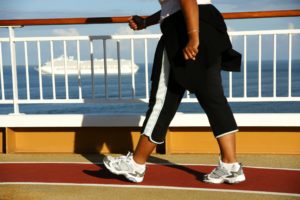 “The available data suggest that exercise training improves de-oxygenation and re-oxygenation patterns, as measured with near infrared spectroscopy (NIRS), in patients with lower extremity arterial disease (LEAD),” conclude Nils Cornelis, Panagiotis Chatzinikolaou (both KU Leuven, Leuven, Belgium) and colleagues in the European Journal of Vascular and Endovascular Surgery (EJVES). They add that their systematic review highlights the heterogeneity of NIRS application methods, outcome variables, and analysis in the literature. However, the authors stress that “more robust” studies are needed to confirm NIRS as a valuable diagnostic tool in patients with LEAD.
“The available data suggest that exercise training improves de-oxygenation and re-oxygenation patterns, as measured with near infrared spectroscopy (NIRS), in patients with lower extremity arterial disease (LEAD),” conclude Nils Cornelis, Panagiotis Chatzinikolaou (both KU Leuven, Leuven, Belgium) and colleagues in the European Journal of Vascular and Endovascular Surgery (EJVES). They add that their systematic review highlights the heterogeneity of NIRS application methods, outcome variables, and analysis in the literature. However, the authors stress that “more robust” studies are needed to confirm NIRS as a valuable diagnostic tool in patients with LEAD.
Cornelis et al write that NIRS “offers a unique opportunity to gain insight into the pathophysiological state of patients with LEAD”, but add that it remains underused in clinical practice. Therefore, the researchers aimed to summarise the impact of exercise therapy on lower limb muscle oxygenation, evaluated by NIRS, in patients with LEAD. In addition, they intended to give an overview of NIRS instruments and methodology.
The investigators conducted a systematic search in MEDLINE and Embase, from the earliest date available until 16 March 2020, in order to identify peer-reviewed studies involving the use of NIRS in the evaluation of exercise training on muscle oxygenation in patients with LEAD. The primary outcomes of the study were NIRS-derived variables during treadmill exercise, they relay.
Cornelis and colleagues detail that they included 11 trials in their review, involving 16 exercise groups and four control groups. Writing in EJVES, they report the following results:
- Tissue saturation index at rest remained unchanged following exercise interventions.
- Exercise training increased time to minimum tissue saturation index during exercise (range effect sizes: +0.172 to +0.927).
- Exercise training led to a faster recovery to half and full tissue saturation index rest values in most intervention groups (range effect size: -0.046 to -0.558 and -0.269 to -0.665, respectively).
- NIRS data reproducibility and analytic methods were under reported in the included studies.
Concluding, the authors remark that NIRS is a “promising tool” in the evaluation of LEAD, but urge caution regarding the finality of the results. They elaborate: “The low number of randomised controlled trials, as well as large heterogeneity in NIRS assessment methods, outcome measures, and instrumentation, warrants more research to better understand the role of muscle oxygenation associated with exercise-induced improvements in walking capacity.”












